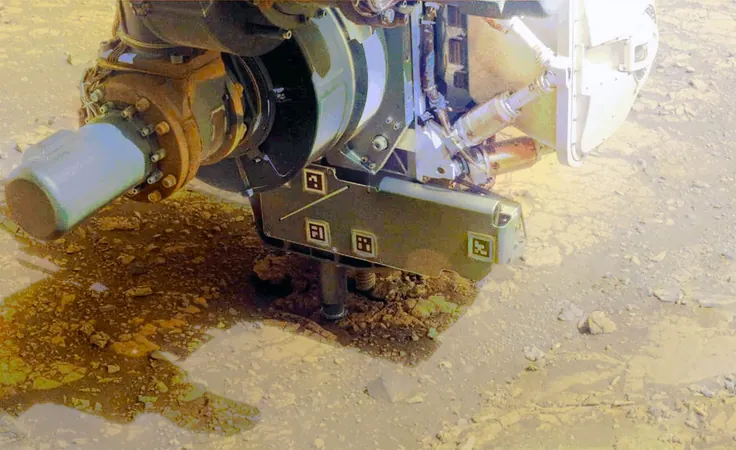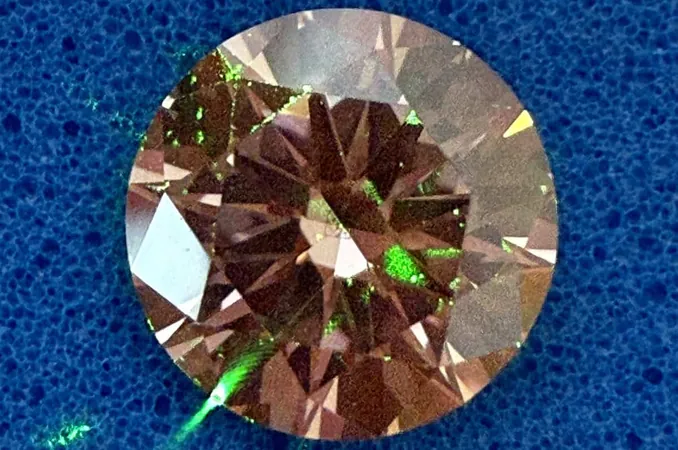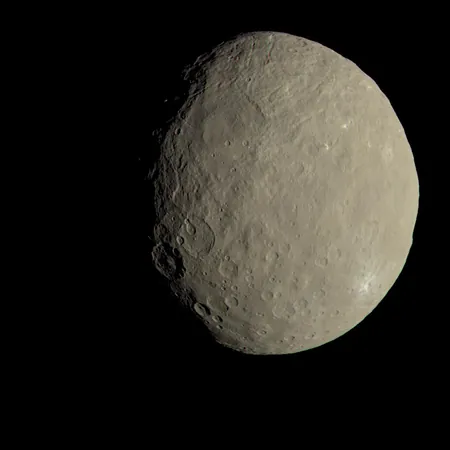
Mars Mysteries Unleashed: Perseverance Rover Digs Deeper into the Red Planet's Secrets!
2025-06-29
Author: Ming
When it comes to unlocking the secrets of Mars, NASA's Perseverance rover is pulling out all the stops. It’s not just about collecting core samples; this rover is literally grinding into Martian rocks to reveal the hidden stories lying beneath the dusty surface.
On June 3, Perseverance tackled a particularly stubborn rock, dubbed 'Kenmore.' The rover scraped away its outer layer, clearing away debris for an in-depth examination.
Unearthing Kenmore: The Strange Rock!
Professor Ken Farley, a noble gas isotope geochemist at Caltech and deputy project scientist for the Perseverance mission, described Kenmore as a “weird, uncooperative rock.” “Visually, it seemed promising—a rock perfect for a detailed analysis,” he remarked. However, it didn’t cooperate. "It vibrated and small chunks broke off during the abrasion process. Thankfully, we reached deep enough for a thorough analysis."
NASA scientists are particularly keen on exploring the unweathered layers of Martian rocks. Grinding them exposes pristine interiors, revealing their true composition and discarding dusty outer layers that could skew results.
A Revolutionary Cleaning Method!
Unlike previous Mars missions that used brushes to clean rock surfaces, Perseverance employs a groundbreaking tool: the gaseous Dust Removal Tool (gDRT). This innovative device releases a blast of nitrogen gas to remove debris without ever touching the rock.
Kyle Kaplan, a robotic engineer at NASA's Jet Propulsion Laboratory, explained, "We’re firing 12-pounds-per-square-inch bursts of nitrogen—five puffs per abrasion—to ensure maximum visibility of the rocks with minimal contamination from Earth." Since Perseverance landed in Jezero Crater, it has used the gDRT 169 times, with 800 puffs still in reserve.
High-Tech Analysis: What Lies Beneath!
Once the dust settles, the rover springs into action using advanced sensors. A camera called WATSON captures intricate close-up images, while the SuperCam fires thousands of laser pulses at the freshly abraded rock. Each pulse kicks up microscopic particles, which are then analyzed for minerals and composition.
Cathy Quantin-Nataf, a team member from the University of Lyon, reported that the analysis of Kenmore revealed the presence of clay minerals containing water, alongside enhancements in iron and magnesium. The discovery of feldspar and a manganese hydroxide mineral was notably groundbreaking—marking its first appearance in the mission!
The Journey Continues!
With its work on Kenmore complete, Perseverance is set to explore new areas along the edge of Jezero Crater. Professor Farley emphasized, “Not all Mars rocks are created equal. Data from Kenmore will help future missions identify which rocks are easier to navigate, sample, or even use for construction.”
Breaking Records: Speeding Across Mars!
On June 19—mission day 1,540—Perseverance achieved a personal best, traveling an astounding 1,348 feet (411 meters) in a single autonomous drive—over 210 feet beyond its previous record!
Using a system known as AutoNav, the rover can navigate independently, thus speeding up its journey between points of interest. Rover driver Camden Miller shared, "Perseverance navigated the length of 4½ football fields smoothly, perfectly landing at our target location. Every day we learn more to optimize our rover's performance, improving future missions as well!"
Curious about the stunning images and more details about the fascinating Kenmore rock? Stay tuned for updates as this incredible mission unfolds!






 Brasil (PT)
Brasil (PT)
 Canada (EN)
Canada (EN)
 Chile (ES)
Chile (ES)
 Česko (CS)
Česko (CS)
 대한민국 (KO)
대한민국 (KO)
 España (ES)
España (ES)
 France (FR)
France (FR)
 Hong Kong (EN)
Hong Kong (EN)
 Italia (IT)
Italia (IT)
 日本 (JA)
日本 (JA)
 Magyarország (HU)
Magyarország (HU)
 Norge (NO)
Norge (NO)
 Polska (PL)
Polska (PL)
 Schweiz (DE)
Schweiz (DE)
 Singapore (EN)
Singapore (EN)
 Sverige (SV)
Sverige (SV)
 Suomi (FI)
Suomi (FI)
 Türkiye (TR)
Türkiye (TR)
 الإمارات العربية المتحدة (AR)
الإمارات العربية المتحدة (AR)